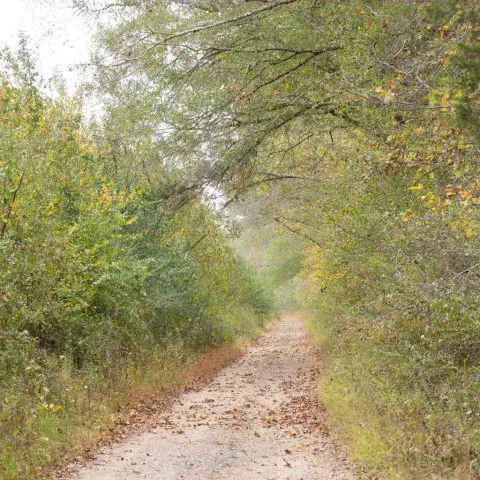Alabama's coastal beaches are a major tourist attraction as well as a lifestyle staple for Alabama residents. Alabama has approximately 50 miles of Gulf Beach and an estimated 65 to 70 miles of bay beaches where the adjacent waters are classified for swimming under the State's Water Use Classification System. Bacterial contamination in Alabama's coastal recreational waters can originate from sources, including shoreline development, wastewater collection and treatment facilities, septic tanks, urban runoff, disposal of human waste from boats, bathers themselves, commercial and domestic animals and natural animal sources such as wildlife. People who swim and recreate in waters contaminated with such bacterial pollution are at an increased risk of becoming ill. Pathogens associated with this type of pollution can cause ear, eye, skin and respiratory infections, gastrointestinal illness, and more serious diseases such as meningitis and hepatitis.
In June 1999, Alabama Department of Environmental Management (ADEM), in cooperation with the Alabama Department of Public Health (ADPH), initiated a program to routinely monitor bacteria levels at five select swimming beaches on the Gulf Coast. The effort was later expanded to include six additional sites along the Gulf Coast and Mobile Bay. In October of 2000 the federal Beaches Environmental Assessment and Coastal Health (BEACH) Act was signed into law. This act mandates the monitoring and assessing of coastal recreational waters and the prompt notification of the public when applicable water quality standards are not being met. The act also authorizes EPA to award grants to help governments implement monitoring and notification programs consistent with published EPA guidance and criteria. The ADEM was designated as the State's lead agency and was awarded grant money to carry out this program. Through the BEACH Act, the ADEM and the ADPH have greatly expanded and enhanced monitoring and notification efforts for Alabama's public recreational waters. The goal of this program is to increase public awareness and provide valuable water quality information to help the public make more informed decisions concerning their recreational use of Alabama's natural coastal waters.
This program now involves the routine collection of water samples from 25 high use and/or potentially high risk public recreational sites from Perdido Bay to Dauphin Island. The selection of sites and the frequency of sampling are determined using a risk based evaluation and ranking process. This process considers a number of factors for a given site, most importantly the amount of use and the amount of risk. Depending on the site, samples are collected twice per week, once per week or once every other week during the swimming season (June through September) and once per month during the cooler months. These samples are analyzed for the indicator bacteria Enterococci. Enterococci bacteria are endemic to the guts of warm blooded creatures. These bacteria, by themselves, are not considered harmful to humans but often occur in the presence of potential human pathogens. The indicator bacteria used and the threshold concentration, which triggers an advisory, are based on recommendations provided by the EPA in the documents Ambient Water Quality Criteria for Bacteria (1986) and Water Quality Standards Handbook, second addition (1983).
How this site works:

The associated map of Coastal Alabama (Water Quality Summary) indicates the locations of the monitoring sites. Click on the location symbol for the point of interest on either the interactive map (click here for interactive map) or the list of monitoring sites below for the most recent advisory status and bacteriological testing results. A three tiered color coded water quality status system is used to help the public make a more informed decision concerning water quality and risk of illness associated with swimming. A green status means that, based on the most recent test, water quality is acceptable. Enterococci levels were at or below the EPA threshold of 104 colonies per 100 ml of water. A yellow status means the most recent test results for a given site exceeded the EPA threshold of 104 Enterococci colonies per 100 ml of water. There may be an increased risk of illness associated with swimming in such water. Because elevated bacteria levels are often transient and usually fall quickly, these sites undergo immediate retesting. The yellow status will be revised to red or green based on the results of the retest. A red status means that repeat testing of a site has again revealed bacteria levels over the EPA threshold of 104 Enterococci colonies per 100 ml of water. There may be an increased risk of illness associated with swimming in such water. Because elevated bacteria levels have persisted, a public health advisory has been issued. Because bacteriological testing requires a 24 hour incubation period, it should be emphasized that even the most recent data (and thus the reported water quality status) are at least 24 hours old, and may not reflect current water quality conditions at these sites.
Water Quality Summary
List of Monitoring Sites
Click on the site name for advisory status and bacteriological testing results.
- Alba Club, Dog River
- Dauphin Island Public Beach, Gulf of Mexico
- Fort Morgan Beach, Gulf of Mexico
- Bon Secour NWR Beach, Gulf of Mexico
- Little Lagoon Pass, Gulf of Mexico
- City of Gulf Shores Public Beach, Gulf of Mexico
- Gulf State Park Pavilion Beach, Gulf of Mexico
- Alabama Point Public Beach, Gulf of Mexico
- Fairhope Municipal Park, Mobile Bay
- Daphne May Day Park, Mobile Bay
- Dauphin Island East End, Gulf of Mexico
- HW 193 Bridge, Fowl River
- Volanta Ave., Fairhope, Mobile Bay
- Orange Street Pier/Beach, Fairhope, Mobile Bay
- Mary Ann Nelson Beach, Mobile Bay
- Camp Beckwith, Weeks Bay
- Cotton Bayou Beach, Gulf of Mexico
- Boggy Point Access, Cotton Bayou
- Orange Beach Waterfront Park, Wolf Bay
- Bear Point Civic Association, Arnica Bay
- Pirate's Cove Marina, Arnica Bay
- Camp Dixie, Perdido Bay
- Escambia Avenue, Perdido Bay
- Spanish Cove, Perdido Bay
- Kee Ave., Perdido Bay
- Florida Point

